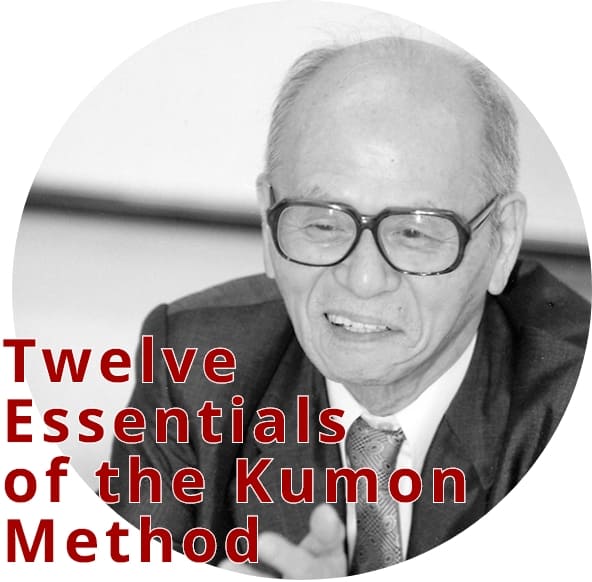Part 10 The Standard Completion Time

Before the SCT was determined, some Instructors had made it their policy to have all their students, no matter how capable they may have been, study the worksheets at least four times. They did so because it was hard for them to correctly grasp the differences in their students' abilities. Though practiced in the past, such an instruction approach cannot be said to fully develop the potential of students with high ability.
Toru Kumon
In part 9 of this series we discussed how with the Kumon Method we ensure that students continuously
achieve perfect scores as they study. This is because achieving 100 per cent by themselves motivates
students to take on the challenge of advancing to even higher levels.
Sometimes at Kumon we are asked the question, "Why do you have students repeat the same worksheets even
when they just got a perfect score?" On paper, one 100 per cent may appear to be the same as another, but
there are in fact many different types of perfect scores. For example, on one section a student may spend
a lot of time working really hard to achieve 100 per cent, whereas on another section the same student may
easily achieve 100 per cent in a short time. In terms of each completed section alone these two types of
100 per cent could be considered as equal, but when we consider the student's overall progress through the
program then they are very different. Kumon Instructors always keep in mind how to help students to
continue their studies to higher and higher levels and ideally complete the program. Therefore, the
instructional approach that an Instructor takes to equip students with the necessary ability to continue
advancing smoothly will differ based on how hard, or how easy, it was for the student to achieve each
perfect score.
So in what cases should we let students advance, and in what cases should we have students repeat?
Generally speaking, at home or in schools there is no standard in place to discern when it is appropriate
to let students advance or repeat. Because of this it is not unusual for children to be forced to do work
that is too difficult, or be made to do needless repetition. The Kumon Method has a standard that we use
to gauge students' academic ability and level of mastery while avoiding overexertion or wasted time and
effort on the part of students. We call this the "Standard Completion Time."
For example, the time to complete each worksheet in a given section of the program may be set at two to
four minutes. This time range is a standard that allows us to tell whether or not students have gained the
necessary ability to advance to the next worksheets. The times are set based on the content and number of
questions contained in each section. The time it takes a student to get a perfect score becomes shorter
with repeated practice. When students study with increased speed it means that they have mastered the
necessary skills required for study up to that level. When students are able to avail freely of these
skills, they can do the worksheets with ease and finish them in a short time while still working carefully
and thoroughly.
Kumon's Standard Completion Time consists of a range of times that we refer to as X time (the quicker
time) and Y time (the slower time). The basic principle is as follows: if students complete their
worksheets in X time or lower they advance; if it takes students Y time or longer to do the worksheets
they repeat; if students' completion times fall between X time and Y time then the Instructor decides
whether they should advance or repeat based on a comprehensive analysis of their learning situation at
that time. However, the Standard Completion Time is not a hard-and-fast rule that must be followed at all
times. Its purpose is to serve as an instructional reference point; so there are times when even if a
student's time was below X time, the Instructor may assign repetition based on his or her knowledge of the
student's learning situation up to that time. The opposite is also true in that there are times when an
Instructor may decide to allow a student to advance even though his or her completion time was longer than
Y time. This is because we place priority on ensuring that our students remain motivated and advance
smoothly toward their goals. From this point of view also, the Kumon Method takes a thoroughly
individualized approach to instruction.
